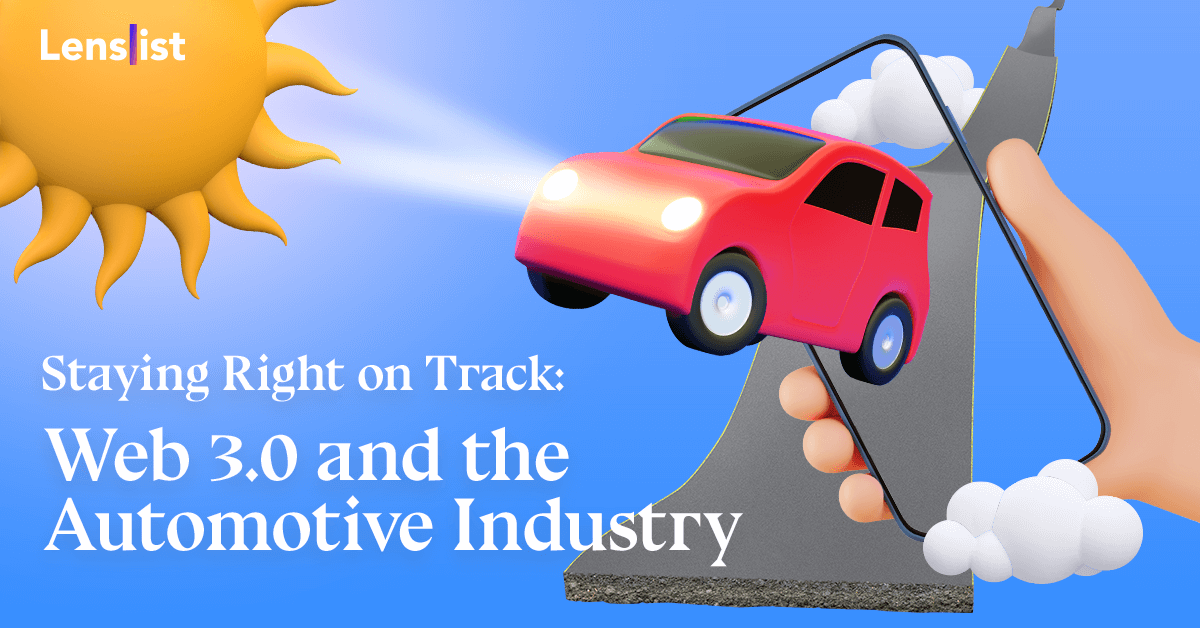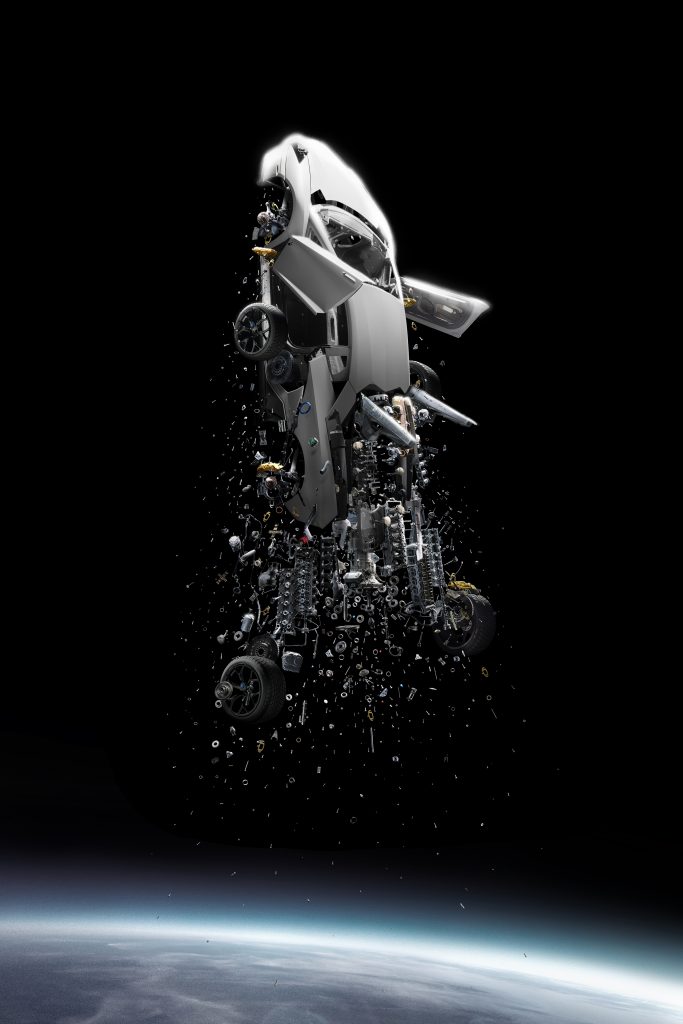Staying Right on Track: Web 3.0 and the Automotive Industry

Customers and their needs changed. They are different from 20 years ago and the same goes for technology. As nowadays technology is gradually transforming almost every part of our lives, from how we pay and communicate to how we commute – the automotive industry, being a powerful player – is in for a truly big change. So far leading the innovation, there is a noticeable shift in the manner and place where it’s all happening.
Automotive brands wish nothing less than the best experiences for all their customers – building a relationship with them, evoking a sense of uniqueness and belonging on common ground is key. Loyal customers would love an exclusive novelty, whereas the young could use some accessible fan extras – because not everyone’s going to afford a Porsche right off the bat.
Ecosystem of Web 3.0
Most brands may be wondering ‘How do we start a dialogue between us and our audience?’. The answer is closer than it seems. If you’ve been carefully following the automotive news, you may have witnessed a relatively major commotion on the topic of… Web 3.0. A short phrase with so much meaning. Web 3.0 reveals an ecosystem of transparency, augmentation, improvement and a set of tools for implementing innovative solutions.
Even though Web 3.0 is a relatively new phenomenon, what may surprise some is the fact that it’s already become a huge ‘playground’ for change and innovation. If you type ‘Web 3.0’ in your browser, phrases such as non-fungible tokens (NFTs), metaverse, augmented reality and virtual spaces are going to pop up. You’ll notice how all these technologies are interconnected: Web 3.0 is a mind-set, a change of perception, looking at the digital world through different values – interaction and gamification. Metaverse is one of the places where this revolution happens.
Augmented Reality as a Value of NFT
Looking closer at the growing popularity of NFTs, the automotive industry seems to recognize their potential. How so? NFTs can work as tradable loyalty tokens and enable customers to earn them and then receive different perks or gifts. Automakers may also issue NFTs in the form of limited edition, handmade artworks, auctions or even challenges for bidders. The one attribute that NFTs guarantee is uniqueness and feeling as if one was a part of the company itself.
However, what guarantees a perfect way to showcase such visual content and complements the NFT’s value is Augmented Reality. A very powerful player and a must-have partner in the metaverse journey. NFTs are visual digital assets, which then can be put “on display” through AR tools. Both technologies can work together – paving the way for NFT Augmentation. What AR brings to the table is adding more depth and setting to any digital artwork. It can be accessed by the user anywhere and anytime. Imagine owning a NFT piece and being able to access it just by reaching out to your phone. A 3D NFT floating above you? A virtual gallery to store your assets? Sure!
Get a glimpse of how some of the most renowned automotive brands invited their enthusiasts to go down in NFT history (and make one while at it). Although… Let’s do one more fun thing and try to look at these examples from the AR perspective.
LAMBORGHINI
As for Lamborghini’s first NFT project, the brand collaborated with the artist Fabian Oefner on creating five art pieces consisting of more than 1,500 individual parts of a car… drifting in Outer Space. The digital artworks, which took more than 2 months for Fabian and his team to assemble, were accessible via a QR code engraved in five units of a physical object, the Space Key. Its elements were sent to the International Space Station as a part of a joint research project with Lamborghini. How cool and other-worldly is that?
 SPACE TIME MEMORY – T+0073S; source: Lamborghini
SPACE TIME MEMORY – T+0073S; source: LamborghiniMoreover, the brand continues the digital journey and takes its enthusiasts on a ‘hunt’ for tokens. During the Epic Road Trip challenge, Lamborghini will drop a series of four NFTs per month, including a rare NFT. The trick is to collect them, receive an according puzzle piece and complete the whole puzzle to access an ultra-rare NFT – now this is how you tease the ultimate reveal of a new vehicle!
Wondering what it would feel like to teleport yourself to your own Lamborghini NFT collection but… in a space-themed virtual gallery? It would be a truly magical sight. Out of the world, even!
Get your phone ready, take a look at this NFT showroom from liko.cov.nft and let your imagination run wild – because in such space, any idea can come to life.
by liko.cov.nft
DUCATI
Preparing for entry into the world of Web 3.0, Ducati, a well-known Italian motorbike company, announced a shift towards more innovative activations such as digital spaces or NFT collections. In that way, the Ducati community will be able to accompany the brand on a new path, full of new experiences and new opportunities.
Now, let’s take a look at this amazing NFT collection from the AR perspective. We are sure these astonishing pieces deserve some exposure! What would you go for if you managed to get your hands on one of those unique digital bikes? Take a look at what Capitola Social did with their collection!
by capitolasocial
The ‘Where’ of Web 3.0
Once the NFTs are all set, a feeling of ‘Hey, something is missing’ may arise. Something like… a space for the NFTs to be minted or traded by the community and a way to experience those virtual assets visually. A world of their own, sharing people’s hobbies and interests together. Luckily, building one is possible – welcome to the metaverse!
Even though the metaverse is a concept in its early stages, if equipped with enough resources, it can serve as a showroom or a trading ground for a brand’s NFT collection. Virtual spaces and galleries would complement NFTs perfectly, for example sellers can easily offer previews and links to online files or mint assets right in the VR environment.
However, VR is only a part of the metaverse. What we’re seeing now is a growing popularity of AR – a technology commonly described as a door to the real-world metaverse. VR, which not necessarily may have its use in everyday life because of the essential headset, AR is something everyone keeps in their pockets. AR turns your phone into a gateway to new experiences and possibilities. Therefore, when searching for solutions that bring accessibility, innovation and real-life sensations together – there is no better way other than AR. The brand’s vision, carefully executed concepts, a bit of technological magic and an AR filter comes to life, together with a 3D car or a mini street appearing right in front of you.
How to combine NFT and AR technology is a thought worth considering – after all, NFT satisfies the need for ownership, but the most important thing is to provide a positive experience for consumers and respond to their needs with immediate availability. AR is the most popular technology that allows you to be in an interactive 3D space, and NFT allows you to create that space while maintaining your identity in a homogenized modern digital world.
With the automotive industry entering the world of Web 3.0, a new generation of marketing is being born. A generation where bonds between the brand and the customers are tighter, the real world smoothly blends with a digital layer and where conventional methods are not enough anymore to keep people curious. New technologies drive innovation, innovation captures the eye of the customer. Even though the sense of ownership or collecting is a strong incentive, it’s crucial to bear in mind that introducing NFT does not necessarily guarantee the consumer’s loyalty and huge outreach. Therefore, finding an optimal technological bundle, such as NFT and AR, lets your audience experience more. That’s exactly what Web 3.0 aims at – a smooth collaboration between the product, the user and becoming strong partners at the beginning of a new chapter.
